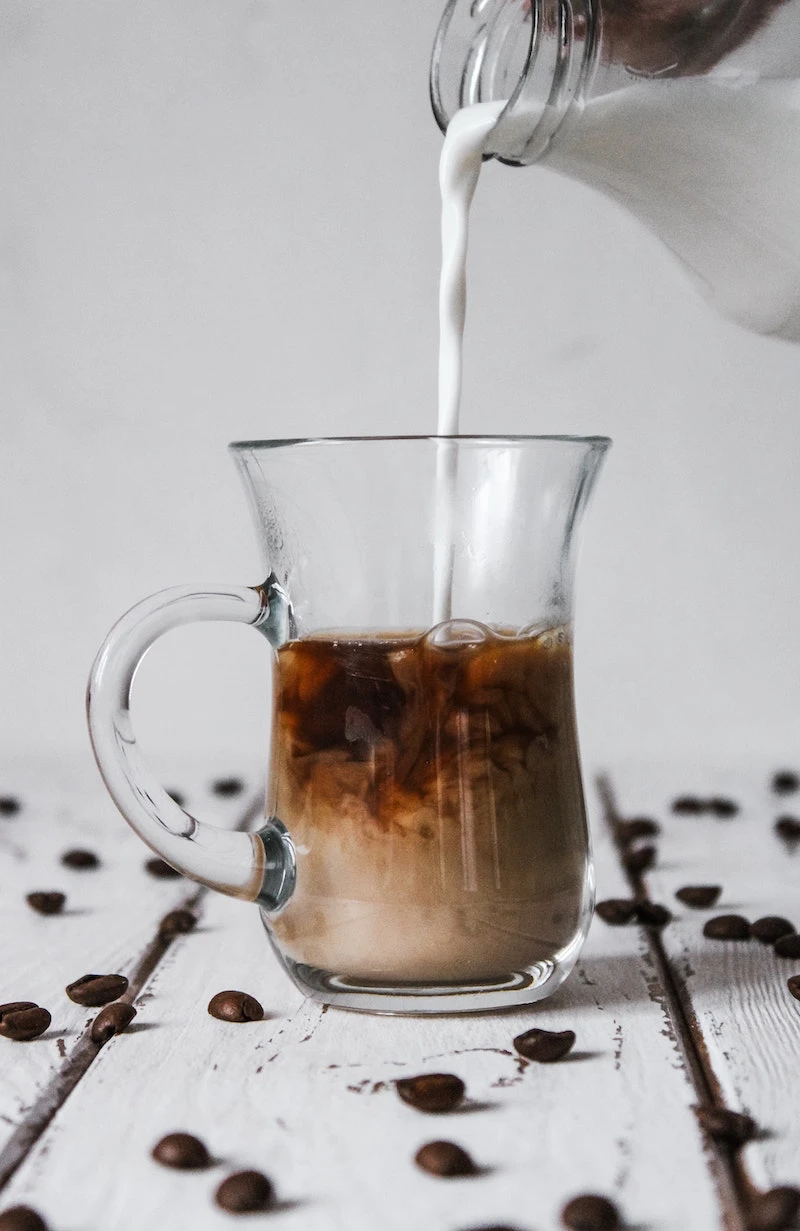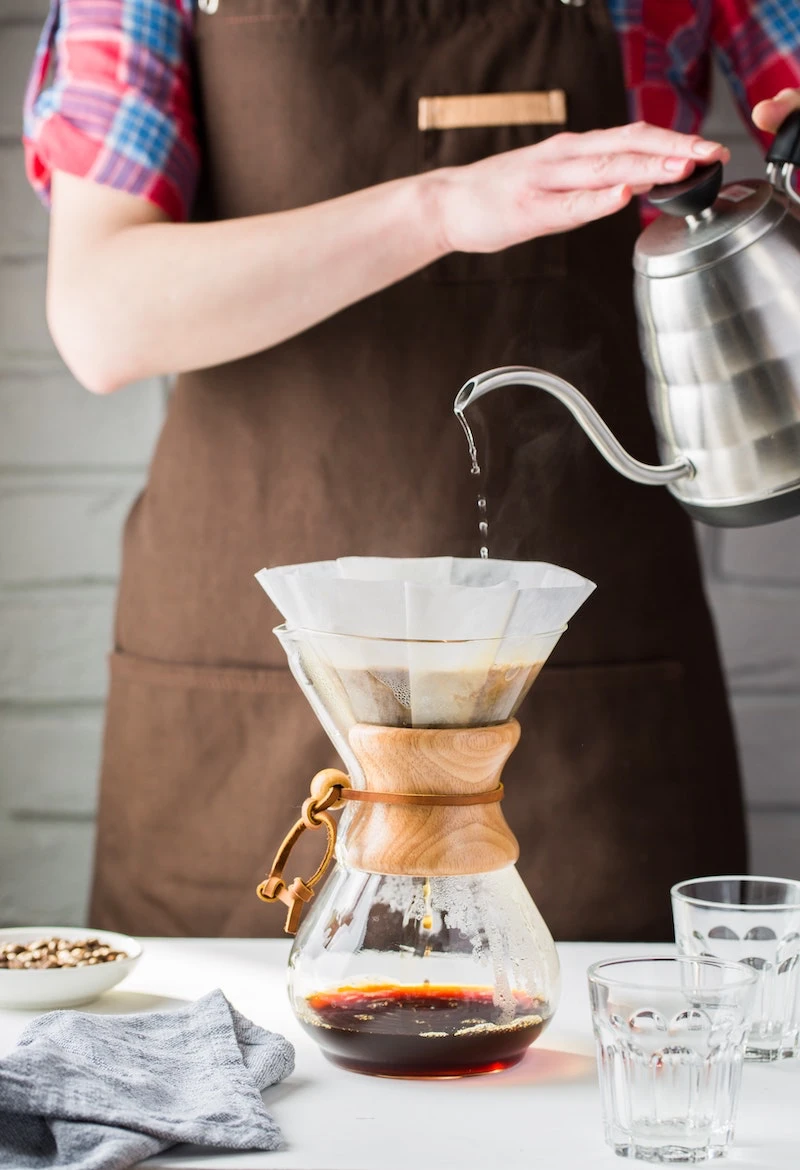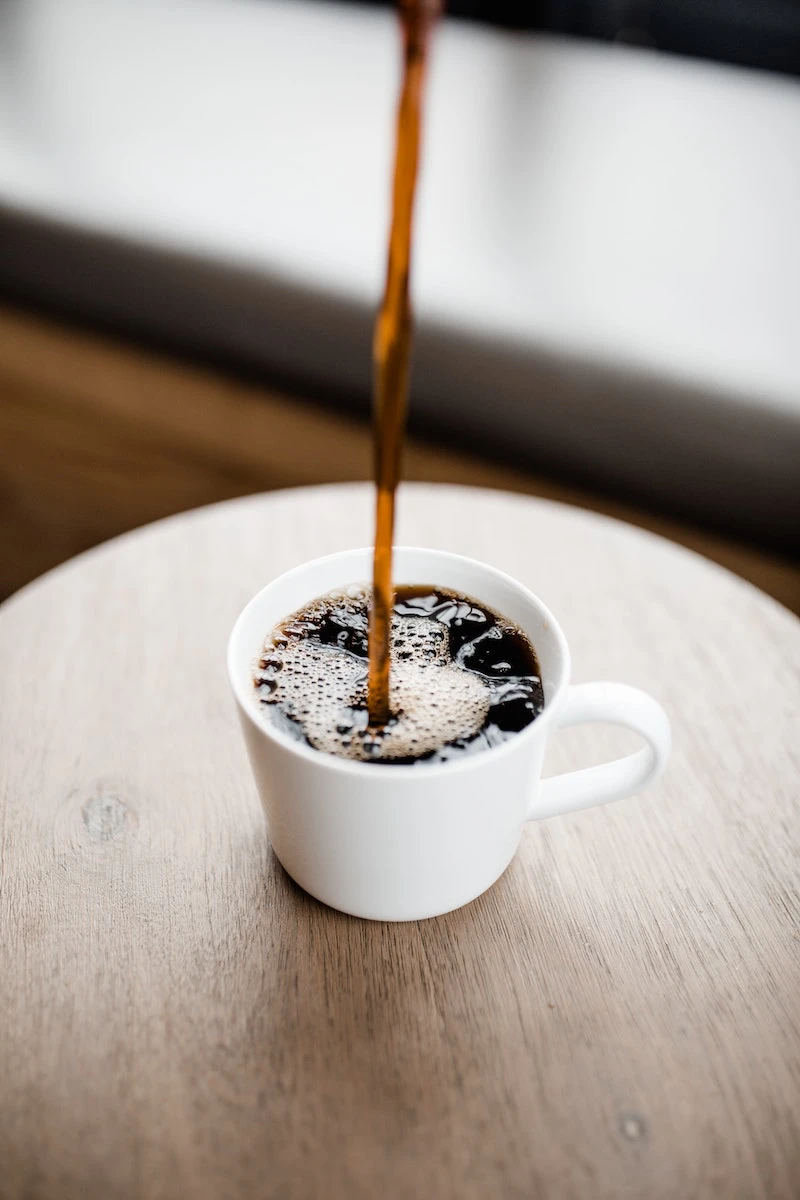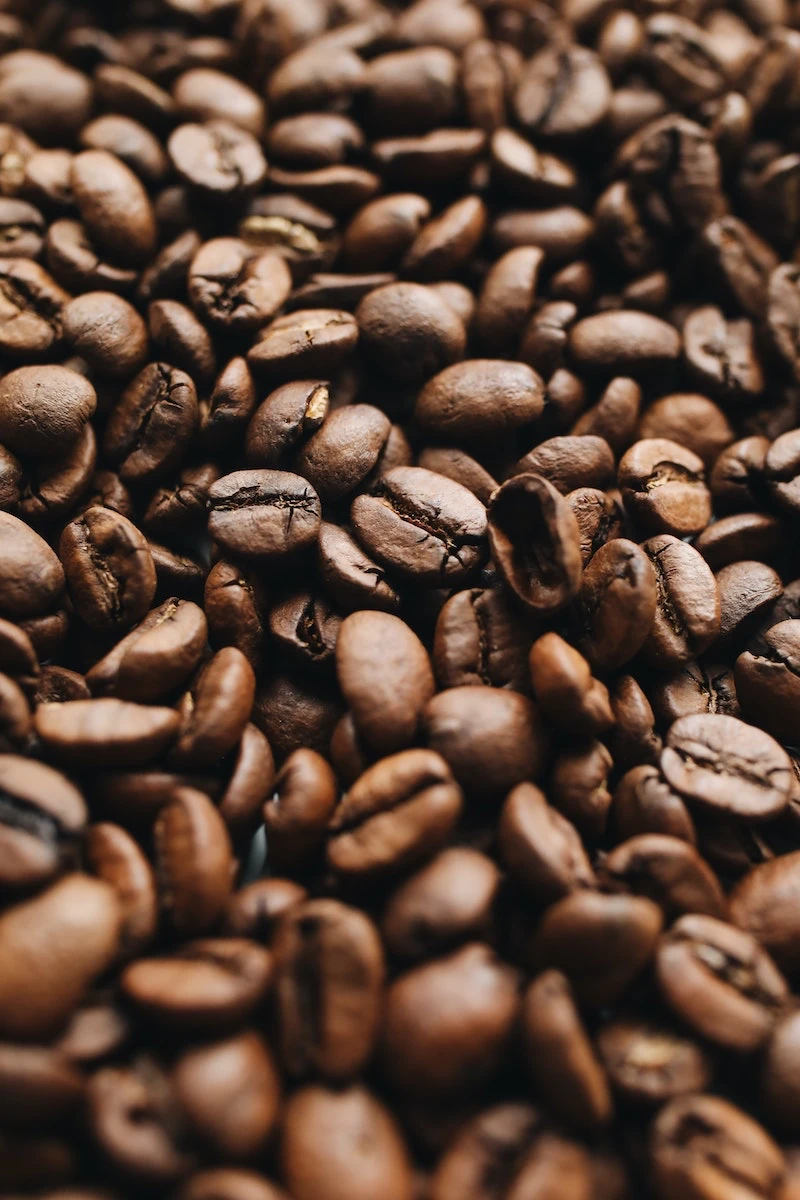Is Coffee Actually Good For You? An Honest Guide to a Healthier Habit
For years, I’ve helped people navigate the confusing world of nutrition, and honestly, no single thing causes more whiplash than coffee. One day it’s a miracle drink, the next it’s a villain. People come to me totally confused, asking, “So… is it good for me or not?”
In this article
Here’s the real talk: coffee isn’t just “good” or “bad.” It’s an incredibly complex drink, packed with hundreds of different compounds. How it affects you is super personal—it comes down to your own body, how you make it, and of course, how much you drink.
My goal here isn’t to give you a simple thumbs-up or down. It’s to pull back the curtain and show you what’s going on in the cup and in your body. This is the kind of chat I have with people every day, and I want you in on it.
What’s Actually in Your Morning Brew?
When you sip your coffee, you’re getting way more than just caffeinated brown water. It’s a whole chemical symphony in a mug. Most people only focus on caffeine, but that’s just the headliner.

Caffeine: The Alertness Engine
We all know this one. Caffeine is the world’s favorite pick-me-up for a reason. It works by playing a clever trick on your brain. A molecule called adenosine builds up all day, making you feel sleepy. Caffeine slides into the same brain receptors that adenosine is trying to get to, essentially blocking the “I’m tired” signal. This is why you feel more awake and focused. As a bonus, it lets feel-good brain chemicals like dopamine flow more freely, giving you a nice mood boost.
Chlorogenic Acids (CGAs): The Unsung Heroes
These are probably the most important compounds for long-term health, and they’re a type of polyphenol. Think of them as your cells’ personal bodyguards. They’re powerful antioxidants that protect you from damage caused by unstable molecules, which is a major driver of aging and chronic disease. These CGAs are the main reason coffee gets so much credit for helping with blood sugar and inflammation. Good to know: The roasting process reduces CGAs, so a lighter roast generally packs more of an antioxidant punch than a dark one.

Diterpenes: The Two-Faced Oils
Now for the tricky ones: cafestol and kahweol. These are oily compounds that have a bit of a dual personality. Some lab studies hint they have protective qualities, but they are also well-known for raising LDL (the “bad”) cholesterol. This is a perfect example of why how you brew your coffee matters so much. If you have any cholesterol concerns, this is a detail you need to pay attention to.
And the Rest…
Your coffee also has things like trigonelline, which adds to that amazing aroma and might even help fight cavities. When you roast the beans, it breaks down into niacin (Vitamin B3). The roasting also creates melanoidins, which give dark roasts their color and have their own antioxidant benefits. So, while a dark roast might lose some CGAs, it gains other good stuff. It’s more of a trade-off than a downgrade.
Choosing Your Brew: A Practical Guide
When someone asks me for the “healthiest” coffee, my answer is always, “It depends on your goals.” Your brewing method seriously changes the final product. Let’s break it down so you can pick the best one for you.

Drip & Pour-Over: The Cholesterol-Friendly Standard
This is what most of us drink, whether from a Mr. Coffee machine or a fancy pour-over cone. The secret weapon here is the paper filter. It’s incredibly good at trapping those oily diterpenes that can spike LDL cholesterol. If you or your family have a history of heart issues, this is my go-to recommendation. You get the caffeine and a solid dose of antioxidants without the cholesterol risk. Pro tip: For the best flavor, make sure your water is between 195 and 205°F. Too cold, and it’s sour; too hot, and it’s bitter. You can get started with a simple plastic pour-over cone online or at Target for about $10, so it’s a super accessible way to make amazing coffee.
French Press & Unfiltered Brews: The Rich & Bold Choice
Methods like French press, cowboy coffee, or Turkish coffee involve steeping the grounds right in the water. The result is a cup with a heavy, luxurious body because all the oils—including cafestol and kahweol—are still in there. I once worked with a client whose LDL cholesterol shot up 30 points for no apparent reason. It turned out he’d recently switched from a drip machine to a daily French press. We switched him back, and his numbers normalized. This doesn’t mean French press is “bad” at all! If your cholesterol is in a great place, go for it. It’s just about making an informed choice.

Espresso: The Concentrated (But Not Over-Caffeinated) Shot
People always think espresso is a caffeine bomb. While it’s concentrated, a single 1-ounce shot has around 65 mg of caffeine, which is actually less than a standard 8-ounce cup of drip coffee (which can easily have 95 mg or more). The high-pressure, short-extraction time means very few diterpenes make it into the cup, making it another solid choice from a cholesterol perspective.
Cold Brew: The Low-Acid King
If regular coffee gives you heartburn, cold brew could be a game-changer. It’s made by steeping coarse grounds in cool water for 12-24 hours. This slow process creates a super smooth, mellow coffee that’s way less acidic. I’ve had so many clients who thought they had to quit coffee find total relief with cold brew. Heads up! The concentrate is potent. You need to dilute it, usually with one part concentrate to one or two parts water or milk.

Want to try it? It’s easy. Here’s my go-to recipe:
Simple Home Cold Brew: Mix 1 part coarse-ground coffee with 8 parts cold, filtered water in a jar. Stir it, cover it, and just let it sit on your counter for about 18 hours. Then, strain it through a fine-mesh sieve or cheesecloth. That’s your concentrate! Store it in the fridge for up to a week.
What About Decaf and Organic Beans?
Oh yeah, let’s tackle these two big questions.
First, decaf. Is it just pointless brown water? Not at all! Most of the beneficial antioxidant compounds, like the CGAs, are still present in decaf. The key is to look for coffee decaffeinated using the Swiss Water Process. This method uses only water to gently remove the caffeine, avoiding the harsh chemical solvents some other methods use. It’s a fantastic option if you love the taste and ritual of coffee but are sensitive to caffeine.

And what about organic? Is it worth the extra few bucks a pound? Coffee is one of the most heavily treated crops in the world when it comes to pesticides. Buying certified organic ensures those chemicals aren’t on your beans or in your cup. For me, the peace of mind is worth the extra cost, especially for something I drink daily. But if your budget is tight, don’t let it stop you from drinking coffee altogether—the health benefits still largely outweigh the potential pesticide exposure for most people.
The Big Health Claims: What’s Real?
Decades of research have given us a pretty clear picture, even if headlines swing wildly. When study after study points in the same direction, we can feel confident about the trends.
- Your Heart: The data here points to what’s called a “J-shaped curve.” This means that non-drinkers have a certain level of risk for cardiovascular issues, but that risk actually drops for people drinking a moderate amount (usually 2-4 cups a day). The benefits seem to come from coffee’s ability to reduce inflammation and help blood vessels work better.
- Your Brain: The evidence is pretty strong here, too. Long-term, regular coffee drinking is consistently linked with a lower risk of developing neurodegenerative diseases. It seems caffeine is the main player in reducing Parkinson’s risk, while a team effort between caffeine and antioxidants helps lower the risk for Alzheimer’s. To be clear, it doesn’t prevent these diseases, but it appears to be a helpful piece of a larger lifestyle puzzle.
- Type 2 Diabetes: This is one of coffee’s most solid benefits. Countless studies show that regular drinkers have a significantly lower risk. And since the benefit is seen with decaf too, we know it’s the other compounds, like CGAs, doing the heavy lifting by helping with insulin sensitivity and slowing sugar absorption. A critical warning, though: this only applies to black coffee. Pumping it full of sugar and syrups completely negates this benefit and does the exact opposite.
- Your Liver: Coffee seems to be a real friend to your liver. It’s consistently linked to a lower risk of cirrhosis, elevated liver enzymes, and certain types of liver cancer. For people managing conditions like non-alcoholic fatty liver disease, moderate coffee intake can be a supportive part of their overall plan.

Making Coffee Work For You, Personally
Once you’ve got the basics, you can really start to personalize your habit.
Your Caffeine DNA
Ever wonder why your friend can have an espresso after dinner and you’re buzzing until 3 AM from a noon-time cup? It’s probably genetics. A specific gene (called CYP1A2) controls an enzyme that breaks down most of the caffeine you consume. If you have the “fast” version, you clear it from your system quickly. If you have the “slow” version, it hangs around much longer, making you more prone to jitters, anxiety, and sleep issues. You don’t need a fancy test for this—your body will tell you. If you’re super sensitive, you’re likely a slow metabolizer and should be mindful of your intake.
The Cortisol Connection: Perfecting Your Timing
Most of us roll out of bed and stumble straight to the coffee pot. But you might get a better boost by waiting a bit. Your body’s natural alertness hormone, cortisol, is highest for about an hour after you wake up. Adding caffeine on top of that peak can sometimes lead to frantic, jittery energy. A better approach? Try this tomorrow: Wake up at 7 AM, drink a big glass of water. Then, wait until 8:30 or 9:00 AM for that first cup. You’ll be surprised at how much smoother and more effective that caffeine lift feels.

Troubleshooting the Annoying Side Effects
- Anxiety or Jitters? This is a clear sign you’ve had too much caffeine for your system. If you’re feeling it right now, drink a big glass of water and have a small snack with some protein and carbs, like an apple with peanut butter. It can help slow the caffeine’s effects and stabilize your blood sugar. Going forward, try a smaller cup or don’t drink it on an empty stomach.
- Ruining Your Sleep? Caffeine has a half-life of about 5-6 hours. That means if you have a coffee at 3 PM, half that caffeine is still kicking around in your system at 9 PM. My advice is a hard-and-fast caffeine cutoff time. For most people, 2 PM is a good rule of thumb.
- Giving You Heartburn? The acid is the likely culprit. You have options! Try a naturally low-acid bean, switch to a dark roast (roasting burns off some of the acids), or make the jump to cold brew, which is the best choice for sensitive stomachs.

Your Easiest Coffee Win This Week
Want one simple change that can make a big difference? If you normally drink two or more cups a day, try making that second cup a “half-caff.” Just mix half regular and half decaf grounds. You will barely taste a difference, but you’ll significantly cut your overall caffeine load, especially in the afternoon.
The Biggest Danger Is What You ADD to It
Let’s be real. For most people, the biggest health risk from coffee isn’t the coffee itself—it’s the stuff we dump into it. A black coffee has maybe 5 calories. A large caramel swirl latte with whipped cream can pack over 500 calories and more sugar than a soda. It’s basically a liquid dessert.
A splash of milk or cream is perfectly fine. But if you’re trying to be healthy, be mindful of the additions. Non-sugar sweeteners like Stevia or monk fruit are better than sugar, but the best thing is to slowly train your palate to appreciate the taste of coffee with just a little bit of cream or milk. By the way, oat milk often has more calories and carbs than almond or skim dairy milk, so just be aware of what you’re pouring in.

The Bottom Line: Safety First
So, where do we land? For most healthy adults, major health organizations agree that up to 400 milligrams of caffeine a day is generally safe. That’s about four 8-ounce cups of coffee. Just remember to count caffeine from other sources like tea or soda.
But coffee isn’t for everyone, and that’s okay. Certain people absolutely need to be cautious:
- During Pregnancy: Leading obstetrician groups recommend limiting caffeine to under 200 mg per day.
- If You Have Anxiety or Panic Disorders: Caffeine is a stimulant and can make symptoms much worse.
- With Uncontrolled High Blood Pressure: Caffeine can cause a temporary spike in blood pressure.
- With Certain Medical Conditions or Medications: Always talk to your doctor, as caffeine can interact with some drugs and worsen conditions like GERD or heart arrhythmias.
Ultimately, a good cup of coffee can be a healthy, wonderful part of your day. It’s not a magic bullet, and it’s no substitute for eating well, sleeping enough, and moving your body. But as a delicious addition to an already healthy life, the evidence is clear: coffee has more than earned its place.










